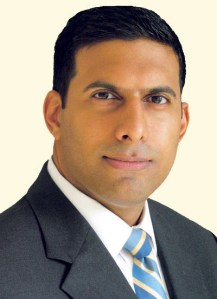If you believe the economy has found its legs, you might know something the Federal Reserve does not. Emerging from a two-day meeting the week before last, monetary policy makers expressed new concerns about the downside risks to growth and hardened the language of their press release to reflect this.
They also questioned whether the employment situation could improve materially absent further policy accommodation, signaling a dim view of the private sector’s inherent potential. The new language hints that the Federal Open Market Committee is prepared to improvise until well after the outlook has improved.

Already at the lower bound of conventional interest rate policy, the Fed has largely exhausted its capacity to support the economy. Even if central bankers are at pains to suggest otherwise, the conduct of monetary policy is now more experimental than substantial. The efficacy of explicit time frames for low rates and shifts in balance sheet composition—two of the current channels for policy intervention—is not incontrovertible. Nor is it clear that such measures have had a meaningfully positive impact on the real economy over this cycle.
With few arrows left in its quiver, what is a frustrated central bank to do? Expanding on its current interventions, the Fed announced last week that it would purchase $40 billion of mortgage-backed securities per month. In combination with its maturity extension program, the new commitment could increase balance-sheet holdings of long-term securities by more than $300 billion before the end of the year. The Fed Funds target rate will be kept at exceptionally low levels for anther three years, through mid-2015.
If high interest rates were the binding constraint on private investment and consumption, interventions to push them to a new historic low might do the trick. But current drags on growth do not relate to the cost of borrowing, nor can they be offset by extraordinary policy accommodation. However well-intentioned, the Fed is seeking to counterbalance weaknesses in fiscal policy that cannot be rendered benign by additional monetary stimulus.
Near-unanimous support for unproven measures suggests a narrowing diversity of thought among Fed policy makers. There is still room for dissent, however. In a statement released last weekend, Richmond Fed President Jeffrey Lacker echoed the view of many economists that “further monetary stimulus now is unlikely to result in a discernible improvement in growth.”
As the Fed ventures further into unknown lands, questions about the effectiveness of policy must spill over into rational discussions of unintended consequences as well. Not least to consider, monetary policy employs blunt instruments on an economy that is far more differentiated than its imprecise tools admit.
Among its more esoteric points, the Fed has signaled its commitment to its accommodative position “for a considerable time after the economic recovery strengthens.” It is reasonable to interpret that statement as a deprioritization of the price stability mandate, even if a higher inflation tolerance is ultimately counter to growth and labor market outcomes.
Too many property investors seem oblivious to the impact of the low interest rate environment on asset values. But the lower yields on Treasuries and mortgage-backed securities distort prices and other market outcomes by design. The effects are not contained to the United States. The Friday before last, Hong Kong’s central bank warned the new round of quantitative easing adds to property price distortions. The Monetary Authority offered that “as long as low interest rates and ample liquidity remains, the risk of asset bubble remains.”
Whether in cardinal markets in the United States or in major global centers, the core properties that are proving the most efficient channels for monetary policy will lose some of their buoyancy when a combination of inflation and unprincipled fiscal policy finally pushes long rates higher. In too many cases, the prevailing going-in spreads analysis will seem remarkably myopic when rates are higher and with the benefit of hindsight.
dsc@chandan.com
Sam Chandan, Ph.D., is president and chief economist of Chandan Economics and an adjunct professor at the Wharton School.


